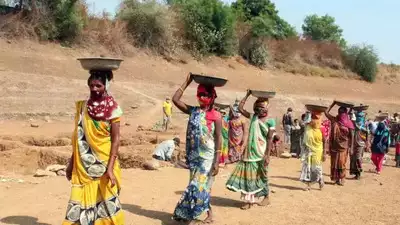The National Rural Employment Guarantee Act (NREGA), renamed the Mahatma Gandhi National Rural Employment Guarantee Act (MGNREGA), is a pivotal employment scheme in India that aims to enhance the livelihood security of people in rural areas. One crucial component of this scheme is the NREGA Job Card List. This digital and/or physical compilation serves as both an identity and entitlement of rural families eligible for work under the scheme. Here, we take a closer look at the various details encapsulated within the NREGA Job Card List.
Primary Components of the NREGA Job Card List
1. Personal and Family Details:
Each entry in the NREGA Job Card List begins with comprehensive personal details. This includes the name and photograph of the job cardholder, along with their age, gender, and address. Furthermore, the list details the number of active family members who can demand work under the scheme. This information is vital for ensuring that the process remains transparent and beneficiaries are identifiable.
2. Unique Identification Number:
Every job card issued under MGNREGA is assigned a unique identification number. This number is crucial for tracking purposes and ensures that work allocation and payments are made accurately and directly to the rightful beneficiaries.
3. Work Details:
The job card list provides a record of the number of days worked under the scheme, type of work performed, and wages received. Typically, it records detailed entries such as the date of work, worksite locations, nature of task, and number of days worked.
4. Payment Information:
Entries in the NREGA job card list also mention detailed payment records. This includes the wages that have been paid, usually calculated at a pre-decided rate per day. As of the latest scheme update, wages could range from ₹202 to ₹309 per day depending on the state, ensuring fair compensation aligned with local economic conditions.
5. Bank/Post Office Details:
To further streamline the process, job cardholders’ bank account or post office account details are included in the list. This facilitates direct bank transfers, which is a key feature of NREGA’s wage payment system, aimed at reducing corruption and ensuring timely payments.
6. AADHAAR Linkage:
Many cards on the NREGA Job Card List are linked with AADHAAR cards, a biometric identification system in India. This linkage is intended to curb duplication and ensure that benefits reach the intended recipients without leakages.
Importance of the NREGA Job Card List
The job card list is not merely a register but an instrument of empowerment. It is intrinsically linked to transparency and accountability in implementing NREGA schemes at ground levels. The information it contains offers a veritable logbook for each of the numerous rural households relying on NREGA for financial sustenance.
Calculations and Economic Impact
With over 11 crore active workers under NREGA as of recent statistics, let’s estimate the wage outflow using a median daily wage of ₹250. Assuming each worker avails 100 days of employment (the maximum guarantee per year), the calculation for total annual wage distribution is:
\[ \text{Total Wages} = 11,00,00,000 \text{ (workers)} \times 100 \text{ (days)} \times ₹250 \text{ (per day)} = ₹2,75,000,00,00,000 \]
This substantial figure highlights the economic significance of the scheme to rural income and purchasing power.
Summary
The NREGA Job Card List is a vital component of India’s social justice and employment framework. It details personal identifiers, work details, and payment information to ensure transparency, accountability, and equity in labor provisions under the MGNREGA scheme. With over 11 crore workers benefiting annually, the list plays a crucial role in the socio-economic fabric of rural India. It stands as both an enabler of livelihoods and a tool for ensuring that state-administered resources reach where they are most needed.
Disclaimer:
The data, calculations, and references provided herein for understanding the NREGA Job Card List are solely for informative purposes. Readers should be aware that the Indian financial market and schemes like MGNREGA are influenced by various socio-economic factors. Detailed due diligence is recommended for anyone looking to interpret or utilize these insights for financial planning or resource management in rural development frameworks.
Summary
The NREGA Job Card List is a cornerstone of India’s rural employment guarantee framework, containing vital information such as personal details, work records, and payment specifics for eligible workers. This list, accessible digitally and physically, helps maintain transparency and accountability in the MGNREGA scheme. Spanning over 11 crore workers, these records ensure that rightful benefits reach rural households. Estimating an annual wage outflow based solely on the scheme suggests a colossal impact on rural economies. This article delves into the components of the NREGA job card list, emphasizing its role in enhancing rural livelihood security, with caveats that all readers should navigate these economic insights with a mindful approach to the Indian market dynamics.







